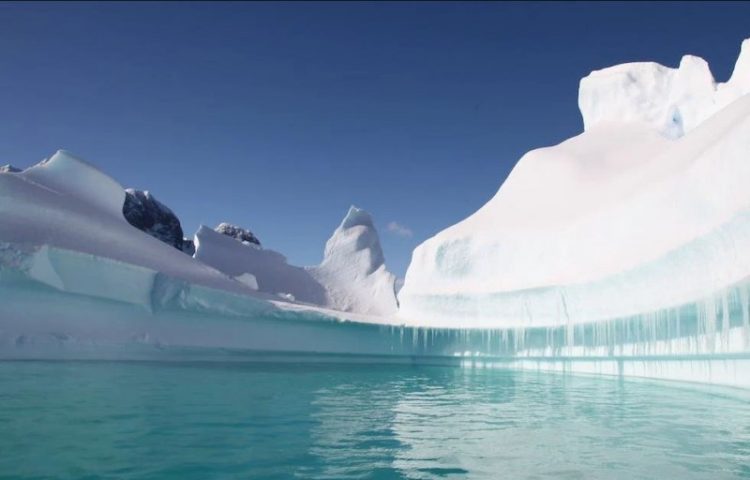“The Bone-Chilling Beauty: Exploring the Most Frigid Place on Earth”

The allure of extreme climates has always captivated the human spirit, pushing us to explore the farthest reaches of our planet. Among the myriad wonders, one realm stands out as the epitome of bone-chilling coldness – the coldest place on Earth. Nestled in the heart of Antarctica, the East Antarctic Plateau holds this frigid title, boasting temperatures that defy imagination and a beauty that is as harsh as it is breathtaking.
The East Antarctic Plateau: An Icy Wilderness
The East Antarctic Plateau is a vast, desolate expanse that stretches across millions of square kilometers, making it the highest and driest desert on Earth. Situated at an elevation of over 3,000 meters, this icy wilderness experiences extreme cold due to its unique geographical and atmospheric conditions. The very lack of moisture in the air contributes to its bone-chilling temperatures, as cold air can’t retain as much heat.
Dome Fuji: The Coldest Place on Earth
Within the East Antarctic Plateau lies Dome Fuji, a desolate dome-shaped summit that holds the record for the coldest temperature ever recorded on Earth. In July 2005, a ground-based thermometer at Dome Fuji plummeted to an astonishing -128.6 degrees Fahrenheit (-89.2 degrees Celsius), setting a new benchmark for frigidity. The relentless winds and sparse vegetation add to the desolation of this already inhospitable landscape.
The Science Behind the Cold
Understanding the science behind the bone-chilling temperatures of the East Antarctic Plateau sheds light on the harsh conditions that make it the coldest place on Earth. The combination of high altitude, clear skies, and dry air allows the heat from the surface to radiate quickly into space during the long polar night. This rapid heat loss results in temperatures that plunge to unimaginable lows, creating an environment unlike any other.
Life in Extreme Conditions
Surviving in the coldest place on Earth is a challenge for any living organism. Yet, some resilient life forms have adapted to these extreme conditions. Microorganisms, including bacteria and algae, manage to eke out an existence in the icy expanses of Antarctica. Scientists study these extremophiles to unravel the secrets of life in the harshest environments and potentially discover clues about life beyond Earth.
The Ethereal Beauty of Ice and Snow
While the East Antarctic Plateau may seem like a barren wasteland, it possesses an ethereal beauty that captivates the few brave souls who venture into its icy embrace. The landscape is dominated by vast fields of pristine, untouched snow, interrupted only by jagged mountain ranges and the occasional research station. The interplay of light and shadow on the glistening snow creates a mesmerizing spectacle that is both haunting and awe-inspiring.
Scientific Research and Discoveries
The extreme cold of the East Antarctic Plateau makes it an ideal location for scientific research. Researchers brave the harsh conditions to study climate patterns, ice cores, and atmospheric phenomena. The ice cores extracted from this region provide valuable insights into Earth’s climate history, allowing scientists to understand past climatic changes and make predictions about the future.
Challenges of Exploration
Exploring the coldest place on Earth comes with its own set of challenges. The harsh weather conditions, the isolation, and the sheer remoteness of the region make any expedition a daunting undertaking. Yet, the allure of unraveling the mysteries of this frozen wilderness drives scientists, adventurers, and explorers to push the boundaries of human endurance.
Environmental Concerns
As global temperatures rise, the coldest place on Earth is not immune to the effects of climate change. Warming temperatures, melting ice, and shifting ecosystems pose threats to the delicate balance of this frozen landscape. Studying the East Antarctic Plateau becomes crucial in understanding the broader implications of climate change and developing strategies to mitigate its impact.
Conclusion:
The East Antarctic Plateau stands as a testament to the extremes that our planet can offer. While it may be the coldest place on Earth, its icy wilderness is not devoid of life, beauty, and scientific significance. As we continue to explore and study this frozen realm, we gain valuable insights into the Earth’s past, present, and future. The bone-chilling temperatures of the East Antarctic Plateau may deter many, but for those who dare to venture into its icy embrace, the rewards are as profound as the challenges are formidable.
- What is the coldest place on Earth? The coldest place on Earth is the East Antarctic Plateau, particularly the Dome Fuji summit within it. This desolate region holds the record for the lowest temperature ever recorded on Earth, plunging to an astonishing -128.6 degrees Fahrenheit (-89.2 degrees Celsius) in July 2005.
- Why is the East Antarctic Plateau so cold? The extreme cold of the East Antarctic Plateau is attributed to its high elevation, clear skies, and dry air. The combination of these factors allows for rapid heat loss during the extended polar night, resulting in temperatures that are unparalleled in their frigidity.
- How do scientists measure the temperature in such harsh conditions? Scientists use ground-based thermometers to measure temperatures in the East Antarctic Plateau. These instruments are designed to withstand the extreme cold and provide accurate readings, helping researchers understand the dynamics of this unique environment.
- Are there any life forms in the coldest place on Earth? Despite its harsh conditions, the East Antarctic Plateau is not devoid of life. Microorganisms, including bacteria and algae, have adapted to the extreme cold and manage to survive in this icy wilderness. Scientists study these extremophiles to learn more about life’s resilience in extreme environments.
- What is Dome Fuji, and why is it significant? Dome Fuji is a dome-shaped summit located within the East Antarctic Plateau. It gained significance when it recorded the coldest temperature ever measured on Earth in July 2005. This remote and inhospitable location is a focal point for scientific research and exploration.
- What scientific research is conducted in the coldest place on Earth? The East Antarctic Plateau is an ideal location for various scientific studies. Researchers explore climate patterns, collect ice cores, and study atmospheric phenomena. Ice cores extracted from this region provide valuable data for understanding Earth’s climate history.
- Is it possible to visit the coldest place on Earth? Visiting the East Antarctic Plateau is a challenging endeavor due to its extreme weather conditions, isolation, and remoteness. Expeditions are typically undertaken by scientists and explorers with specialized equipment and logistical support.
- How does climate change affect the coldest place on Earth? Climate change poses a threat to the East Antarctic Plateau. Warming temperatures, melting ice, and shifting ecosystems impact this frozen wilderness. Studying these changes is crucial for understanding the broader implications of climate change and devising strategies for conservation.
- What challenges do explorers face in the coldest place on Earth? Exploring the East Antarctic Plateau comes with numerous challenges, including extreme weather, isolation, and logistical difficulties. The harsh conditions demand careful planning, specialized equipment, and a deep understanding of the region’s unique challenges.
- Why is studying the coldest place on Earth important? Studying the East Antarctic Plateau is vital for gaining insights into Earth’s past climates, understanding current environmental changes, and predicting future trends. The scientific research conducted in this region contributes to our broader understanding of climate dynamics and global environmental issues.






